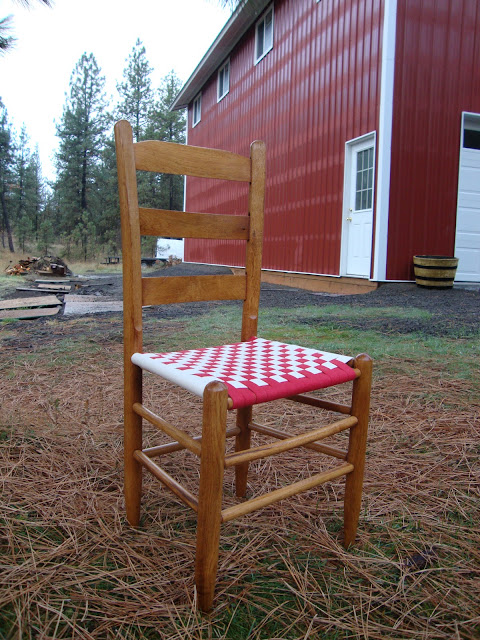If you want to cook tasty food, be self sufficient and save money, then you really need to learn how to make your own broth (or stock).
Poultry or red meat: it’s pretty much the same process.
You will need: herbs and spices, leftover veggies, leftover chicken or turkey carcasses (or steak or lamb bones if you want a dark broth), and tasty bits, water, salt, a big stock pot, a colander/strainer, cheesecloth, a stove, and some time. Oops! Forgot: you’ll need some plastic tubs with lids and a freezer!
Making broth is much more of a process than it is a recipe. If you regularly make broth, you’ll develop a system of saving tidbits, so that you have the perfect ingredients without having to run to the grocery store. Afterall, this is all about economy.
So, to start off on the right foot, set aside a section of your freezer to save those tasty morsels for the broth. Dump these into a zip bag and toss in without a moment’s thought:
· Onion skins and bits (these give flavor and color)
· Garlic bits and leftovers
· Chicken and turkey backs, wings, anything left on the plate from your family (refrain from livers, as those cloud the broth)
· Parsley and cilantro leftovers, such as stems
· Any leftover herbs
· If you’ve been very good, you will have saved your chicken necks and feet!
When you are ready to make broth, take all your freezer ingredients and put into a large stockpot (see note below re cooked versus raw ingredients). About a 12 cup/3 quart size pot is good. Pour cold water over the ingredients until just covered with water.
Now, the fun part is adding aromatics, spices and herbs. Here’s what I add, but you should experiment on your own:
· 2 stalks celery chopped large (use the leaves also)
· 2 large carrots, chopped rough
· 1 rough chopped parsnip or turnip (secret ingredient if you can get them!—do NOT be tempted to use potato, as it will cloud the broth)
· 2 star anise
· 6 whole cloves
· 1 stick cinnamon
· 6 allspice berries
· 3-6 bay leaves
· 1 T dried rosemary or a large sprig of fresh
· 1 clump of thyme sprigs
· 1 t fennel seeds
· 2 T coriander seeds
· 1 t cumin seeds
· ½ t celery seeds (some people don’t like these!)
· 2 t red pepper flakes (makes it hot—be careful)
· 1 whole garlic head, cut in half (use more if you like!)
· 1 whole yellow onion, cut into quarters (red onions are good too, as are shallots)
· 1 T coarse sea salt or kosher salt (1-2 t of regular table salt, as it is really salty comparatively)
Put everything into the pot if using cooked meat and cover with cold water. If using raw, hold off ‘til it is cooked—see comments below.
Cooked versus raw poultry
Now, here is the trick: if you are using raw poultry, don’t add anything to the pot at first but the bird parts and the water. Bring to a rapid boil, take off heat and skim off the foam/scum. Then add your other ingredients. If your parts have already been cooked, then go ahead and put everything into the pot at the same time and cover with cold water.
Why do this? Raw meat has blood and other fluids that when heated congeal. These rise to the surface as gray scum. You don’t want this in your nice broth. Once released, they are easily skimmed off and given to your dogs as a treat. If your bird is the carcass of a leftover, then the fluids have already been dealt with. Proceed with blessings in that case.
 |
| Skim the scum from raw meat broth. |
 |
| The simmering broth with added vegs and spices! |
The cooking part: best to bring to a boil, skim if necessa, reduce to simmer (don’t boil) with a cover for about 3-4 hours. You only boil it once: at the beginning!
Uncover and simmer more if you want to get better color. Cool and strain twice—first with a colander and second through cheese cloth. Return to heat and reduce til desired flavor/consistency. I find that I need to reduce the broth on a low heat for 2-3 hours or so—NEVER boil—just get some rolly little waves. Taste for salt and add it needed near the end.
You don’t need to stand around your stove during this. Go about your business, take a trip to town, do the laundry, etc.
Let cool in fridge overnight. The next day the fat will be hardened on the top. Skim this off and give to the dogs. (And go through all your leftovers from the stock you strained the day before and give the dogs the meat, celery, garlic, and carrots. Do NOT give dogs onions or cooked bones.)
Package the broth into plastic containers and freeze (when cool).
 |
| Viola! Broth. . . importantly! |














